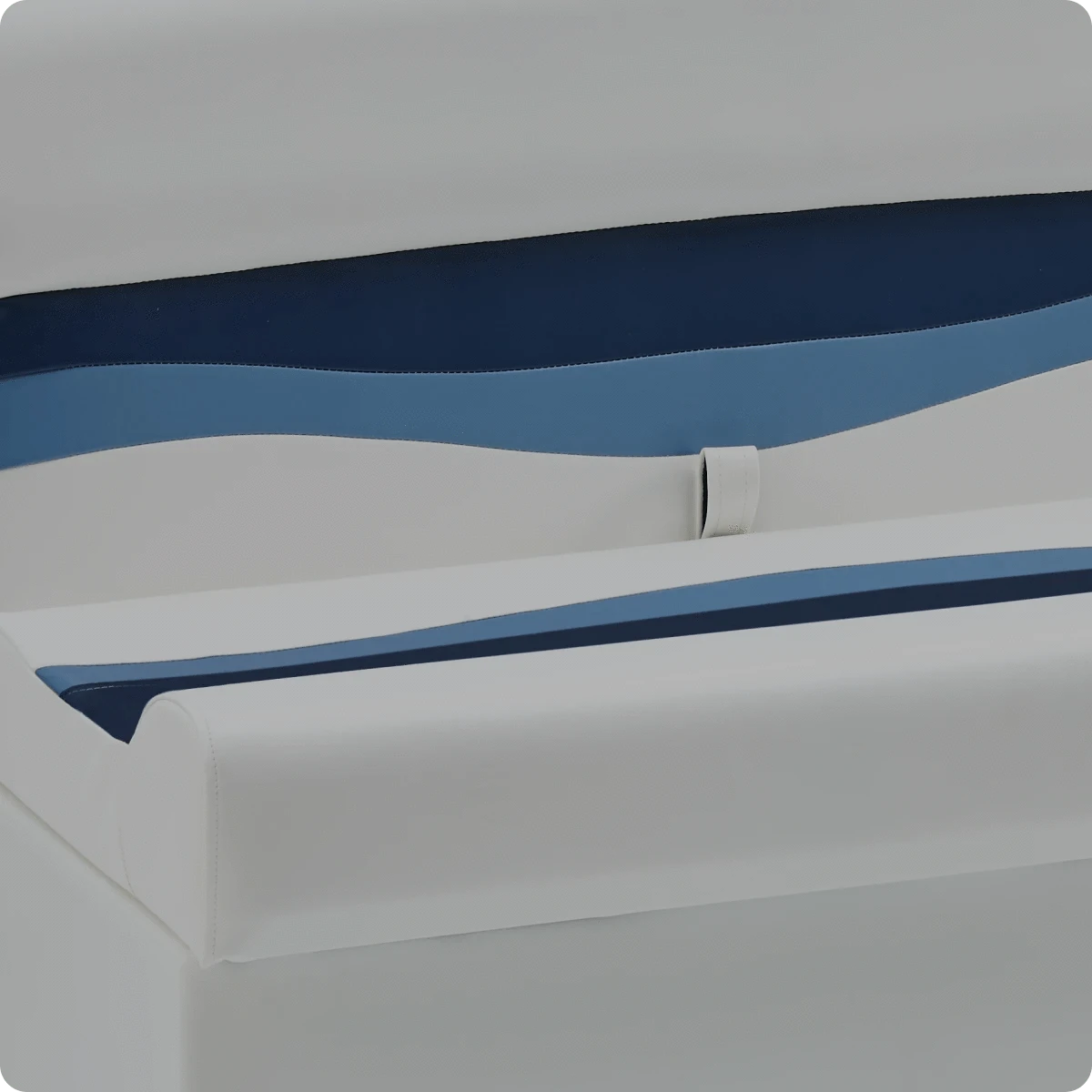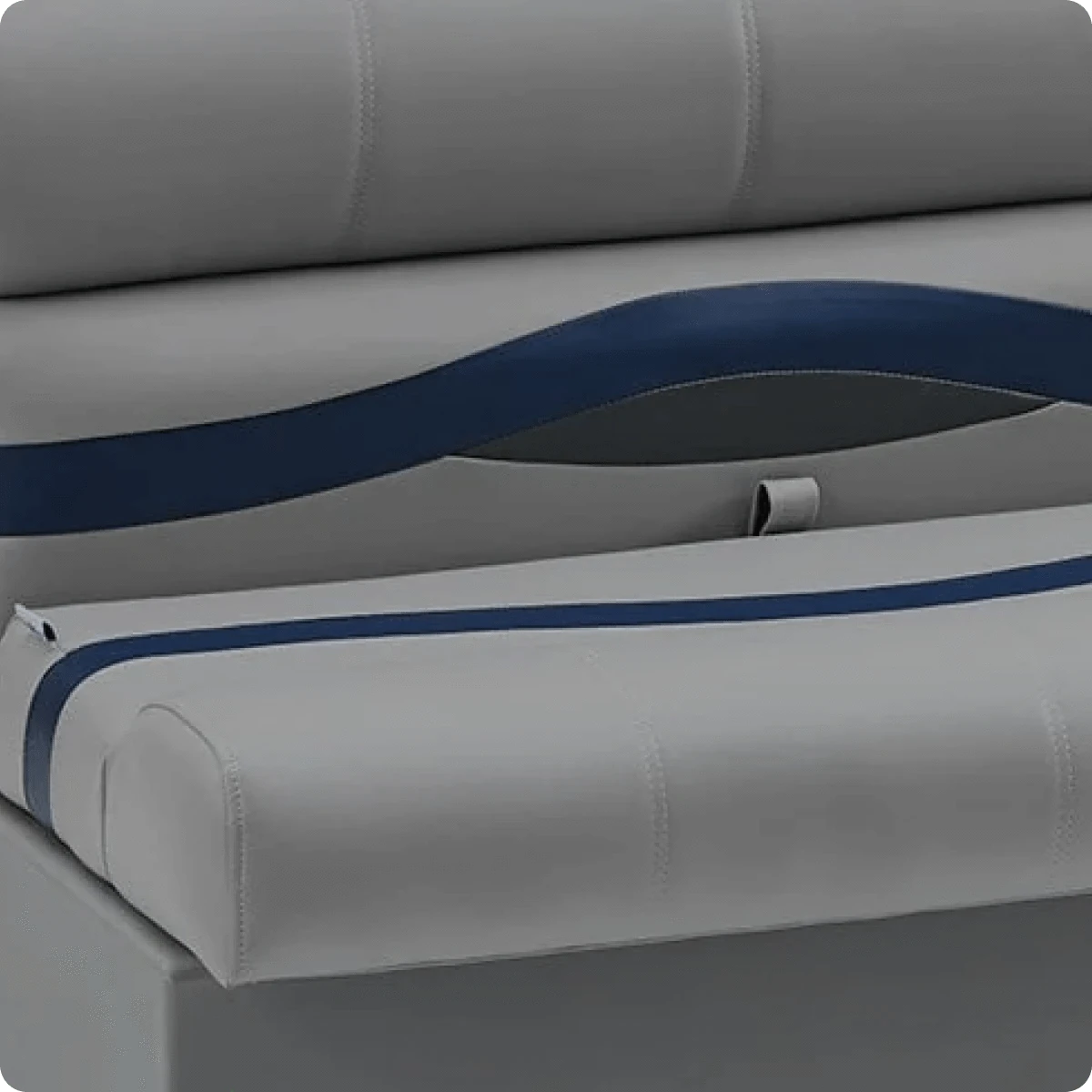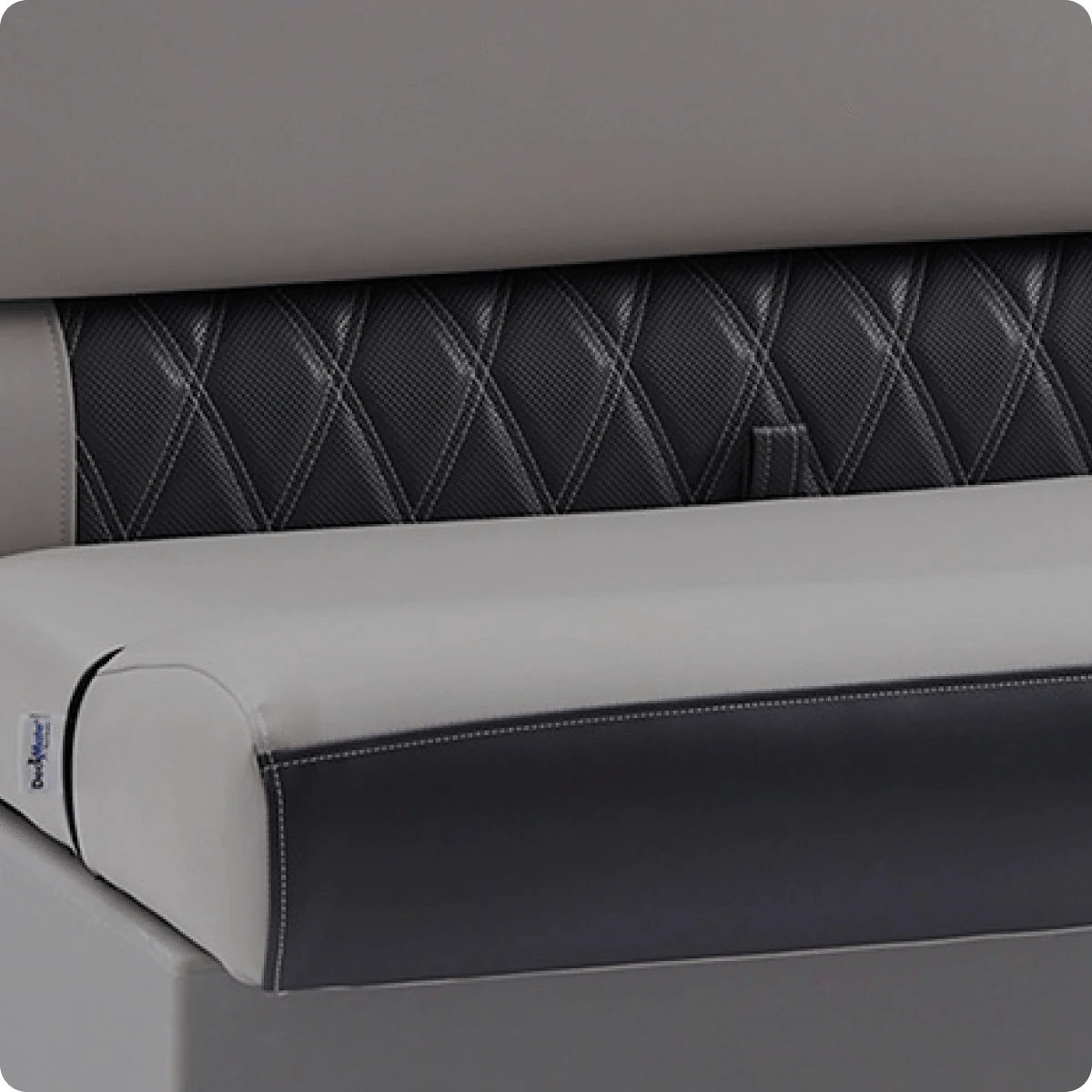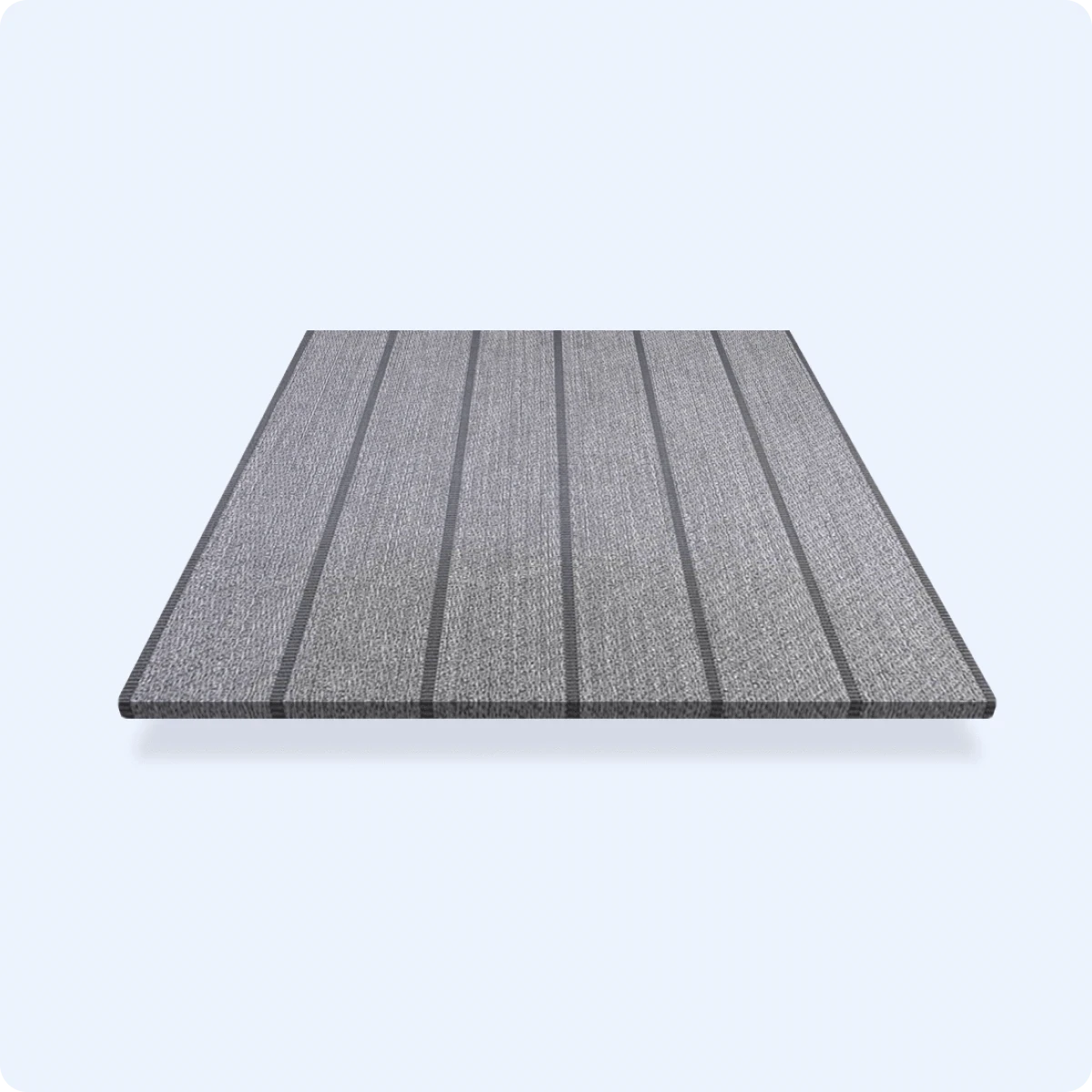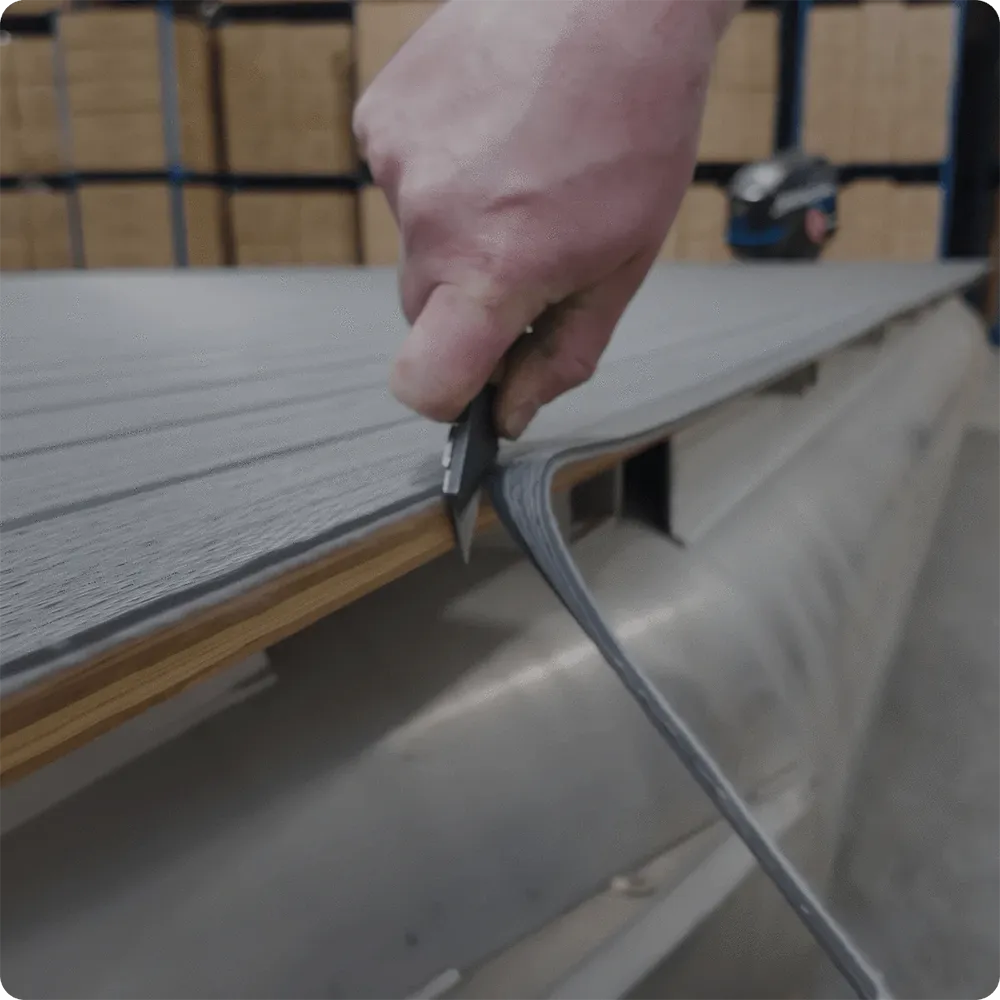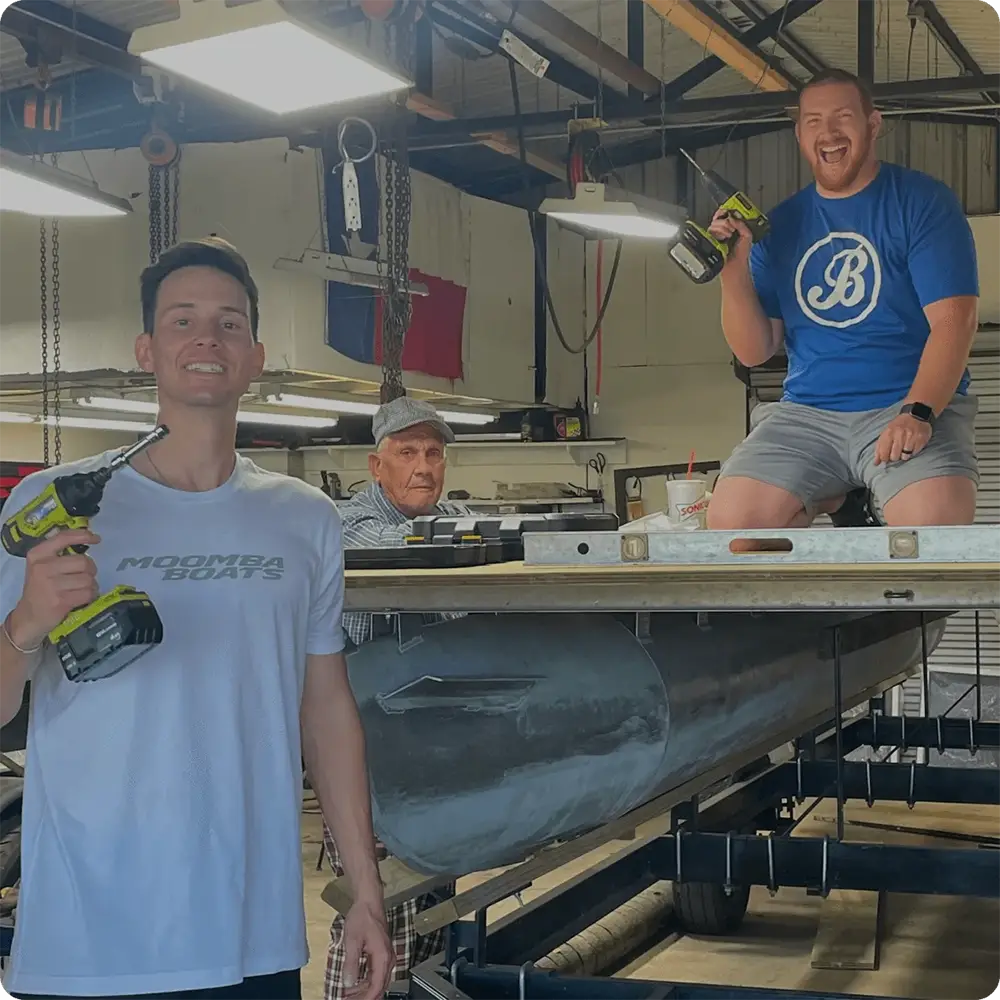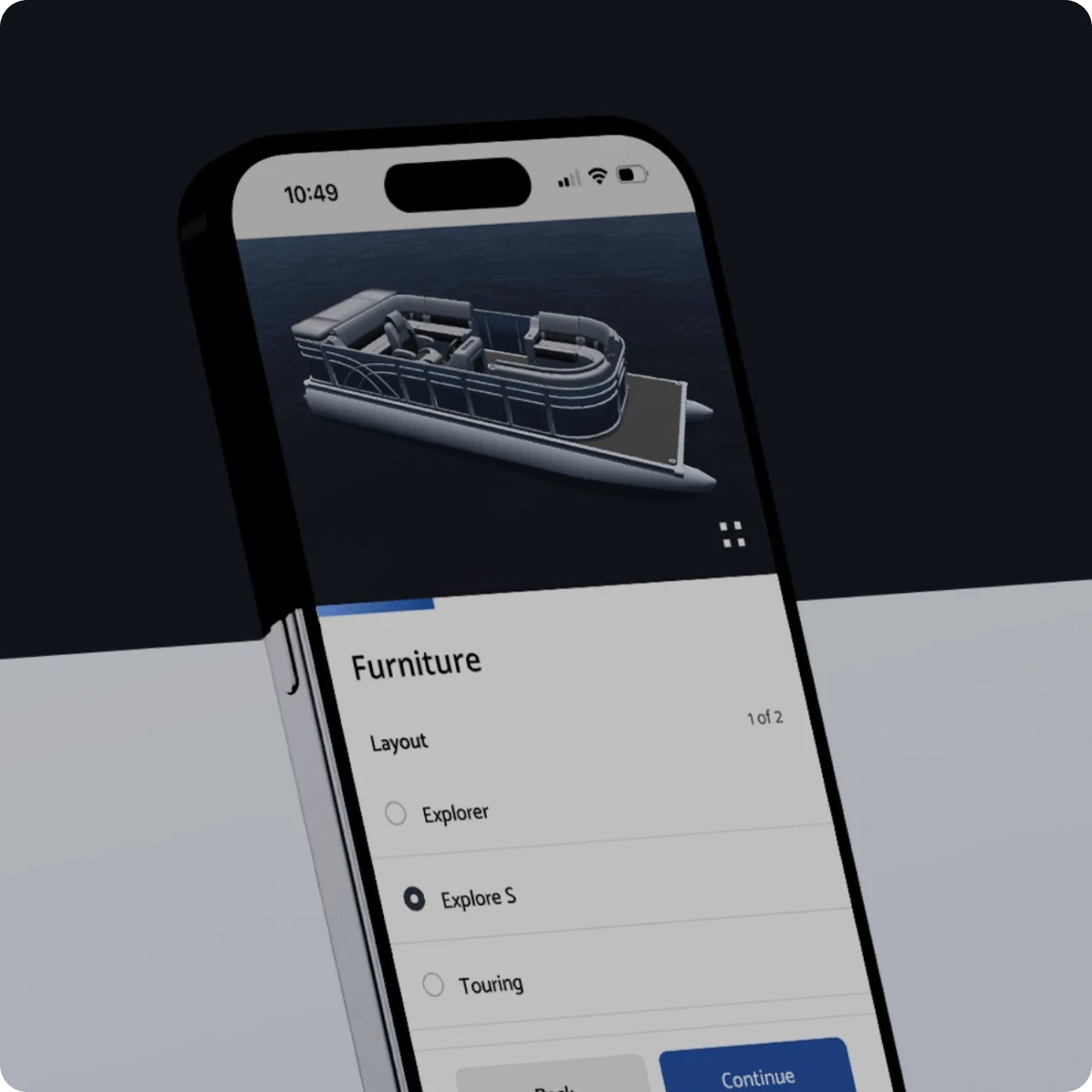What to Look for When Buying a Used Pontoon Boat
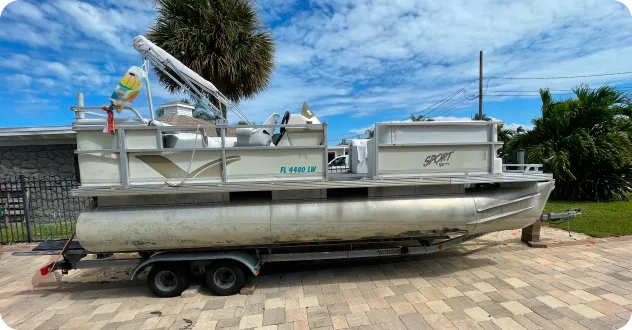
If working on a used pontoon boat has been on your bucket list, you're not alone! With new boat prices on the rise, restoring an older pontoon can be a smarter, savvier, and more sustainable way to get out on the water.
In this guide, we’ll walk through five things you should look for in a pontoon restoration candidate and five things you should avoid, featuring expert advice from Michigan pontoon boat expert Tom, from Tom’s Toons.
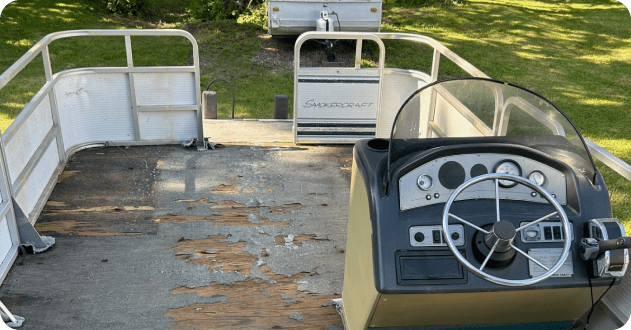
Top 5 Things to Look for in a Used Pontoon
1. A Ready-to-Rumble Motor
Make sure the motor starts easily and runs smoothly. Four-stroke motors are quieter and cleaner, but a well-maintained two-stroke can do the trick!
No matter what you choose, make sure the motor’s horsepower matches your needs. For example, casual cruising with a smaller motor (like a 25-horsepower) will be no problem. But if you’re taking the kids tubing and skiing, you may need to consider a motor with 60+ horsepower, depending on the size and weight of the pontoon boat.
2. Bigger Pontoons, Better Buoyancy
Larger diameter pontoons give you more stability and load capacity, so we recommend looking for pontoon diameters between 23 and 25 inches, regardless of the boat's length. If you’re keeping the load of seating, gear, and passengers light, a boat with smaller diameter pontoons may serve you perfectly. Plus, boats with smaller diameter pontoons will usually have a lower price tag, offering value on a budget boat to restore.
Compliance Tip: Check the Coast Guard capacity plate to ensure the boat can safely meet your needs for passenger, load weight, and horsepower maximums.
3. Deck Lengths & Widths
Consider the waterways you’ll be frequenting and how your boat will need to navigate them to determine the size that works best for you.
A wide deck (around 8.5 feet) means more room for friends, family, and gear. Narrower boats (around 6 ft to 7 ft) can squeeze into tight waterways but offer less space onboard.
4. Solid Components
Inspect major parts like the console, transom, and railings. If they’re in good condition, you can reuse them and save hundreds, which you can reinvest in new seats, flooring, or electronics. Give the welds, support brackets, and crossmembers a solid review to ensure the boat is in seaworthy shape.
5. Trailer Included? Bonus Points
A boat purchase that includes a trailer can save you anywhere from $4,000 to $5,000. Even if a used trailer needs a little TLC, it’s a significant cost-saver for your restoration project. A pontoon on a trailer also offers much higher resale value and opens the door to more potential buyers.
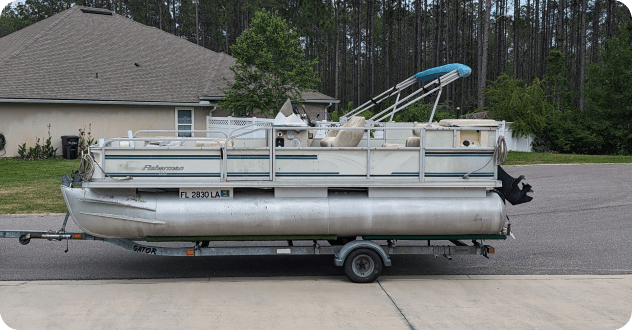
5 Pitfalls to Avoid When Choosing a Pontoon to Restore
Not every fixer-upper is worth the effort. Watch out for these red flags that could sink your restoration dreams.
1. Problematic Motors
Do your homework on the motor model. Avoid outdated or discontinued engines, such as older Force or Evinrude four-strokes, which may have hard-to-find parts.
Pick a motor with parts that are readily available and serviceable, like fuel-injected 4-stroke motors such as Mercury, Yamaha, Suzuki, Tohatsu, or Honda. There are still plenty of good two-cycle outboards out there with available parts and marinas that are still willing to service them. Your future self will thank you for doing your due diligence!
2. Damaged Pontoons
Ensure you give those pontoons a thorough check (they’re what makes a pontoon….well, a pontoon). Use this quick and easy checklist to ensure no red flags go unaccounted for:
- Flat spots
- Cracked welds
- Leaks
- Damaged nose cones or splash guards
- Water sloshing inside
This simple list will help you identify a boat with a great foundation that will keep you afloat for years to come.
3. Tiny Toon, Big Trouble
Avoid pontoons with a diameter under 20 inches, especially if you plan to load up with people or supplies for that annual fishing trip. Small pontoons sit lower in the water and can be unstable with heavy loads, especially in rough conditions.
4. Missing Paperwork
To avoid legal headaches, make sure your new-to-you boat comes with proper registration and title documents.
Compliance Tip: Always verify that the hull ID matches the paperwork!
5. Too Good to Be True? It Probably Is.
Be cautious when shopping on sites like Craigslist or Facebook Marketplace, and always inspect the boat in person before buying.
If a deal seems suspicious or rushed, trust your gut and walk away from a potential scam. Don’t fret–your perfect opportunity will present itself, and you’ll feel more confident in your purchase.
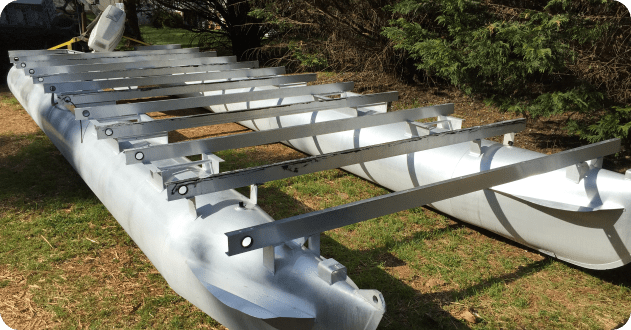
Feel Empowered to Build Your Dream Boat
Restoring a used pontoon boat can be an affordable and rewarding way to get back on the water. Plus, everything you need for your restoration project, including furniture, flooring, electrical, and accessories, can be found right at PontoonStuff.
Need more guidance? Check out Tom’s Toons video series for in-depth restoration tips and real-life examples of successful projects–including what to look for (and what to avoid!) for your next project.
With careful planning and the right components, you’ll be cruising the lake in style in no time.
Happy restoring!


